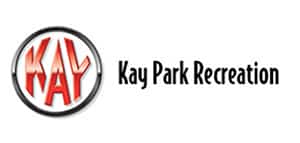By Jennifer Seydel
A California statewide coalition of nearly 50 education and children’s health experts banded together to explore climate change from the unique perspective of health and education for children.
Through their research, 14 evidence-based recommendations were developed to center resilience against climate change within California’s public school systems. It explores how the state can create “schools that help to mitigate both the causes and impacts of climate change.”
This report focuses on California schools, but the conversation can be brought nationwide, and the green schools movement is one essential starting point.
We cannot solve the climate crisis without schools, teachers, and community members. We forget that schools are a nexus for children and adults in every community, a place where students and educators spend the majority of their day.
So, how can we create healthy, sustainable, and equitable learning environments that allow us to shape a world that is sustainable and just?
At Green Schools National Network, we believe everyone can play a role in the green schools movement; no contribution is too big or small. Here are three reasons why.
- Everyone Is a Leader and a Learner
Everyone has a voice and a unique perspective they can lend toward the creation of healthy, equitable, and sustainable schools. Parents, teachers and staff, students, and community members are contributing to the green schools movement as leaders and learners.
And neither has to happen in silo; there are things to teach to and glean from others across every level of engagement. Different generations, cultures, and experiences mean we all have a unique voice to contribute to the furthering of this work.
Where do you feel strong enough to educate? What do you feel the most inspired to learn?
- Equity Always Matters
The importance of unique voices brings us to our next reason. There’s not just space, but a need for everyone to have a role in the green schools movement.
All students (regardless of their backgrounds, zip codes, and social, gender, and racial identities) deserve opportunities go to schools that have safe, healthy learning environments and ultimately achieve academic success. Just like all people deserve the same types of environments to learn, work, and grow.
Equity is a topic not often enough discussed or centered within districts, schools, and communities. There is no sustainable future for any of us that doesn’t lace equity throughout its entire framework.
What does equity mean to you? How can you make equity a bigger part of your life?
- Systemic Change Endures
Healthy, equitable, and sustainable schools can only be achieved through whole-school transformation. Adopting a living systems approach is one way to integrate sustainability into all facets of a school’s design, operations, curriculum, and culture.
But there are many ways for school leaders and staff, teachers, and community organizations to create the conditions required for impactful change. Whole-district, whole-school, whole-community, and whole-person change are the true keys to metamorphosis.
Even though we are not all starting on the same footing, we can still collectively take steps in the right direction. Solid building blocks will be the foundation of authentic change capable of outliving us all.
When you think of systemic change starting at the school level, what do you envision? What about when you think of systemic change expanding further out into our world?
Green Schools Provide a Path to a Sustainable and Just Future
What we can’t forget is that solving the climate crisis is a marathon, not a sprint. Effective, lasting solutions start at the local level and actively engage young people in their ideation and implementation.
Starting on the ground with schools and communities allows us to capture the most vital playmakers – students, the ones who will soon be the changemakers and environmental students of the world.
The green schools movement is more than just teaching students to care for the ecosystems that sustain us. Creating a healthy, equitable, and sustainable future necessitates that teachers and students acknowledge and address environmental justice and social justice issues, too.
Poverty, food insecurity, disease, systemic racism, air quality – we cannot expect to solve these challenges if we don’t have the knowledge and skills to co-create the future we want.
Green schools are paving the way to a just and sustainable future by modeling healthy, equitable, and sustainable practices in everything they do, from how they operate on a daily basis to the curriculum they teach.
Green schools can accomplish many of the things they do because they have support from everyone in the school community – administrators, teachers, school staff, parents, students, and community members.
In reality, though, we are far from ensuring that every child attends a green school. How do we ensure every stakeholder in this movement, no matter their starting point or current relation to climate resilience, feels seen, represented, and influential in our fight for climate change?
At Green Schools National Network, we believe there’s a place for everyone to participate in the green schools movement, and everyone’s help is needed to turn this climate crisis around.
Despite the challenges or barriers to entry your school, district, or community faces, future generations (and ours!) deserve a chance at knowing genuine health, equity, sustainability, and resilience.
Jennifer Seydel, Ph.D., is the executive director of Green Schools National Network, where together with schools, districts, organizations, and individual educators, she is working to transform schools from good to green, www.greenschoolsnationalnetwork.org.














